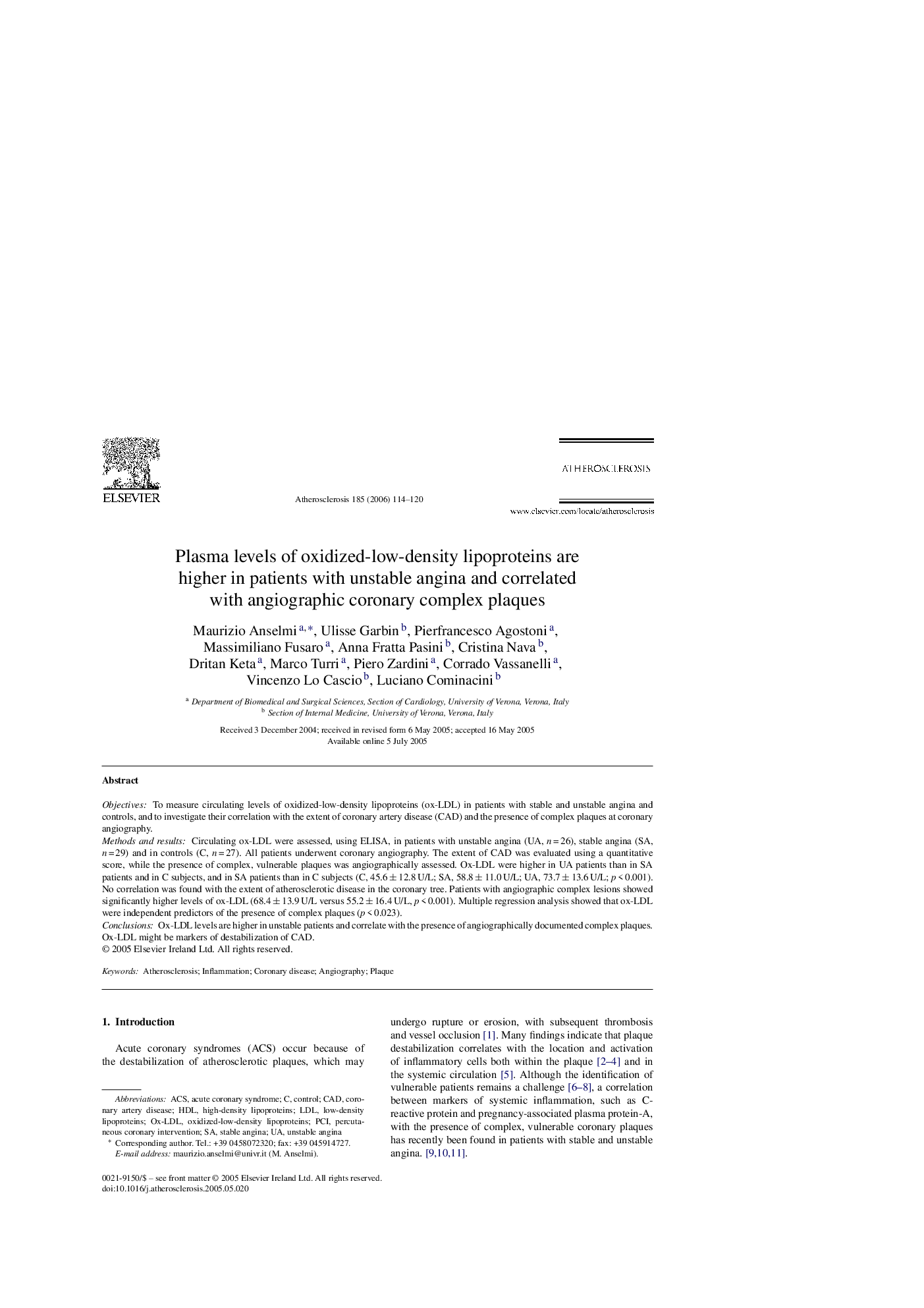| Article ID | Journal | Published Year | Pages | File Type |
|---|---|---|---|---|
| 2895407 | Atherosclerosis | 2006 | 7 Pages |
ObjectivesTo measure circulating levels of oxidized-low-density lipoproteins (ox-LDL) in patients with stable and unstable angina and controls, and to investigate their correlation with the extent of coronary artery disease (CAD) and the presence of complex plaques at coronary angiography.Methods and resultsCirculating ox-LDL were assessed, using ELISA, in patients with unstable angina (UA, n = 26), stable angina (SA, n = 29) and in controls (C, n = 27). All patients underwent coronary angiography. The extent of CAD was evaluated using a quantitative score, while the presence of complex, vulnerable plaques was angiographically assessed. Ox-LDL were higher in UA patients than in SA patients and in C subjects, and in SA patients than in C subjects (C, 45.6 ± 12.8 U/L; SA, 58.8 ± 11.0 U/L; UA, 73.7 ± 13.6 U/L; p < 0.001). No correlation was found with the extent of atherosclerotic disease in the coronary tree. Patients with angiographic complex lesions showed significantly higher levels of ox-LDL (68.4 ± 13.9 U/L versus 55.2 ± 16.4 U/L, p < 0.001). Multiple regression analysis showed that ox-LDL were independent predictors of the presence of complex plaques (p < 0.023).ConclusionsOx-LDL levels are higher in unstable patients and correlate with the presence of angiographically documented complex plaques. Ox-LDL might be markers of destabilization of CAD.
